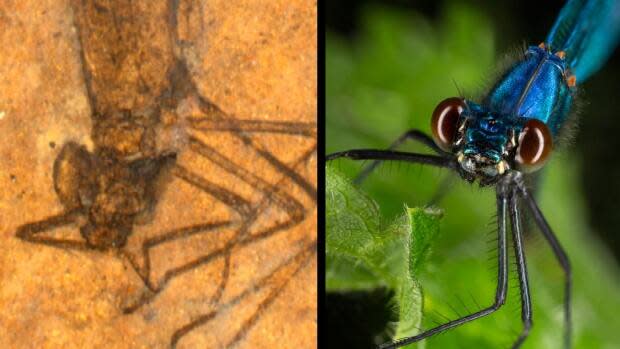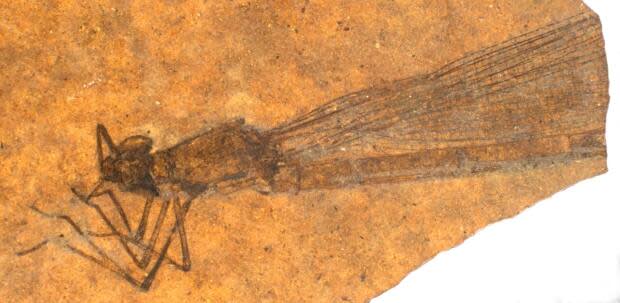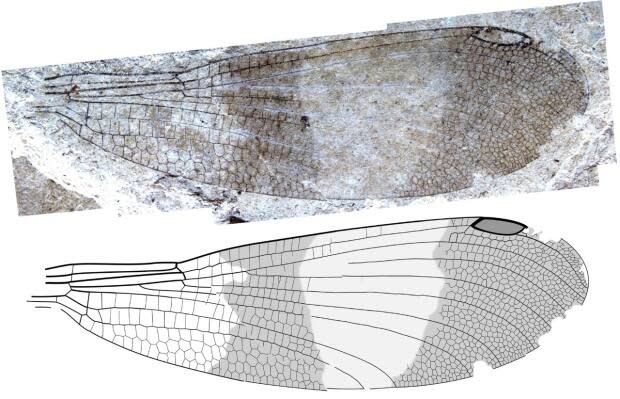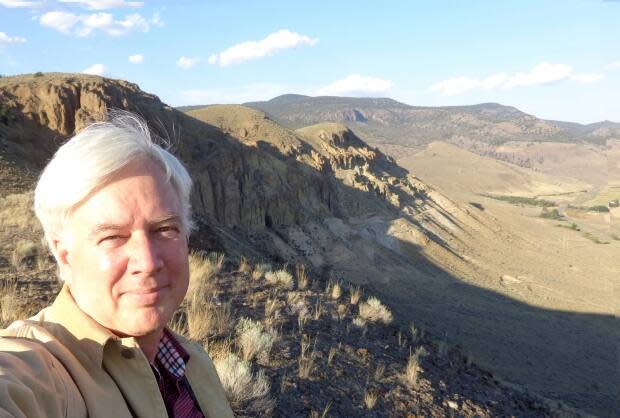B.C. paleontologists find new category of insect fossils related to damselflies

A group of insects that became extinct about 10 million years ago are actually not damselflies, says Simon Fraser University paleontologist Bruce Archibald.
In an academic journal article published in late February, Archibald and his colleagues name 16 new species and categorize them under their newly coined suborder Cephalozygoptera, which means "head damselflies."
Both Zygoptera and Cephalozygoptera are now divisions under the order for flying insects, Odonata.
Archibald has spent three decades examining insect fossils on the Okanagan Highland, a 200-kilometre plateau running from southern B.C. into northern interior Washington, an area that includes McAbee, B.C. and Republic, Wash.
Whetwhetaksa millerae, one of the newly discovered species for instance, is named after the word whetwhetaks, which means dragonfly-like insects in the language of Colville Indian Reservation located near Republic.

While conducting research, team member Robert Cannings, curator emeritus of entomology at Royal B.C. Museum, noticed something different about the insects' heads.
"These heads look really weird," Archibald said to Brady Strachan, the guest host of CBC's Daybreak South. "We started looking into this a lot more, and we realized that they are not damselflies at all."

Archibald says the confusion between Cephalozygoptera and Zygoptera stemmed from German paleontologist Hermann Hagen, who in 1858 said the oddly rounded head and eyes of Cephalozygoptera were caused by distortion of the Zygoptera's short and wide heads during fossilization.
Archibald's team argued against this theory after looking through 150 years worth of scientific literature.
"We realized that this odd shape was only in this one group and none of the ones outside of this group," he said. "When we saw the big picture, we realized that this was actually the true shape of their heads and that this distinguished them from damselflies."

Cephalozygoptera insects existed in B.C. and Washington about 50 million years ago, he says, but disappeared from the Western Hemisphere about 30 million years ago while surviving in Europe and Asia.
Archibald says he's glad to have debunked a century-old academic mystery.
"It was like figuring out a giant puzzle, like doing a big Sudoku," he said. "It was very satisfying to come up with an answer and understand what was going on here."
Tap the link below to hear Bruce Archibald's interview on Daybreak South:

